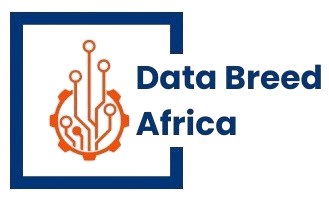In our interconnected world, your most critical data is a global target. Discover why Privileged Access Management (PAM) is the essential shield for any modern enterprise, everywhere.
In the global digital economy, data is the universal crown jewel. From financial records in London to customer databases in Tokyo and intellectual property in São Paulo, this data is the lifeblood of modern enterprises. But what protects these invaluable assets? Often, it’s a set of digital “keys” known as privileged accounts.
If your business operates online, understanding and securing these keys is not just an IT best practice; it’s a global business imperative. This is where Privileged Access Management (PAM) comes in.
What Exactly is Privileged Access Management (PAM)?
At its core, PAM is the strategic framework of policies, processes, and technologies used to control, monitor, and secure elevated (“privileged”) access to an organization’s critical systems and data.
Who are the “privileged users”? It’s a wide net that extends across the organization:
- System & Database Administrators with the power to configure systems and access entire databases.
- C-Suite Executives who have access to sensitive financial and strategic data.
- Third-Party Vendors and Remote Teams who need access across borders and networks.
- Automated Application Accounts (service accounts) that interact with databases and other apps.
A PAM solution centralizes the control of these powerful accounts, ensuring they are not misused, stolen, or compromised, no matter where they are used.
Why PAM is Non-Negotiable in a Borderless World
The interconnectedness of the global business landscape has erased traditional security perimeters. Here’s why PAM is a critical component of any international cybersecurity strategy:
- The Prime Target for Global Cyber Attacks: Cybercriminals operate without borders. Their number one goal is to steal privileged credentials to gain unrestricted access to networks and data anywhere in the world. A vulnerability in one office can be an entry point to the entire global organization.
- The Universal Insider Threat: Whether it’s a well-meaning employee making a costly error or a malicious insider, the risk is present in every country and every industry. Privileged accounts in the wrong hands can lead to devastating global data leaks or system sabotage.
- Meeting International Compliance Head-On: Data protection laws like GDPR in Europe, CCPA in California, and PIPEDA in Canada mandate strict controls over who can access personal data. A robust PAM strategy is the most direct way to demonstrate this control and ensure compliance across different jurisdictions.
- Ensuring Global Business Continuity: Supply chains, financial markets, and customer services are globally integrated. Ransomware and other attacks that use privileged credentials can halt operations worldwide. PAM builds a formidable barrier that protects your core business from being held hostage.
The Core Pillars of an Effective PAM Strategy
Implementing PAM involves several key components working in harmony, recognized as global best practices:
- Discovery & Inventory: Continuously find and classify all privileged accounts across your entire environment, including on-premise, cloud, and hybrid infrastructures.
- Password Vaulting: The cornerstone of PAM. Passwords are stored in a secure, centralized vault, eliminating shared or hard-coded credentials. Users check out passwords without ever seeing them.
- Session Monitoring & Management: Record and monitor all privileged sessions in real-time. This provides an irrefutable audit trail for forensics and allows for immediate intervention if suspicious activity is detected.
- Just-In-Time (JIT) Privileges: Instead of standing, permanent admin rights, grant elevated access only when needed, for a specific task, and for a limited time. This “principle of least privilege” drastically reduces the attack surface.
- Multi-Factor Authentication (MFA): Fortify the PAM system itself by requiring a second form of verification, ensuring that only authorized users can even request privileged access.
The Tangible Global Business Benefits of PAM
Beyond security, a PAM implementation delivers clear value to the bottom line, everywhere:
- Drastically Reduced Cyber Risk: Proactively prevent catastrophic data breaches stemming from credential theft or misuse.
- Streamlined Global Compliance: Generate detailed, compliant-ready reports on privileged activity with ease, simplifying audits against multiple regulatory frameworks.
- Operational Efficiency: Automate tedious tasks like password rotation and access requests, freeing up your IT team for more strategic work that drives the business forward.
Secure Your Global Operations with Data Breed Africa
In the race to digitize, don’t leave the keys to your kingdom unprotected. Privileged Access Management is not an expense; it is a strategic investment in your company’s global resilience, reputation, and long-term success.
The challenge is universal, and the solution must be world-class. The journey starts with a conversation. Contact Data Breed Africa today to assess your current privileged access landscape and learn how our global expertise can help you build a robust, modern security framework that protects your most valuable asset—wherever you operate.
Check out our PAM Solutions here: https://www.databreedafrica.com/cybersecurity-solutions/
